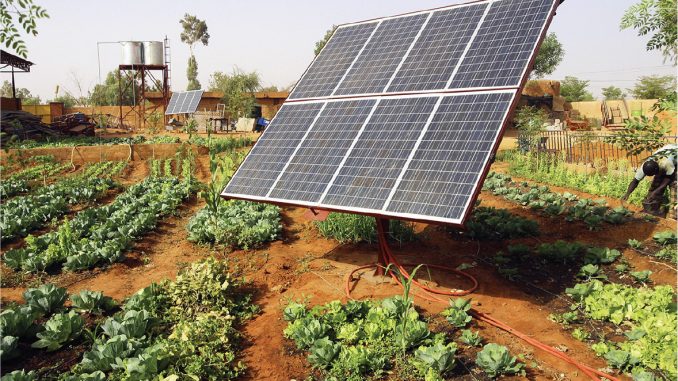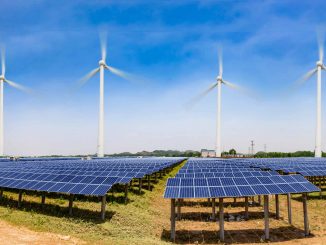
In recent times, renewable energy has become an enabler of lives and livelihoods. Improving access to clean energy is a crucial objective of India’s various energy policies. It is also a global sustainable development goal. While India has made significant strides in improving clean energy access through various projects and policies, there is still significant scope for growth and improvement.
Decentralised renewable energy (DRE) is an effective way to improve energy access while enhancing community welfare. DRE applications provide an effective means of income generation, especially in rural areas. These applications include solar dryers, solar mills, solar- and biomass-powered cold storage/chillers, solar charkhas and looms, and small-scale biomass pellet-making machines.
These solutions present immense opportunity in India. Several pilots as well as full-fledged projects of DRE livelihood applications have been successful in the country. These pertain to sectors such as agriculture, agro-processing, dairy, poultry, fisheries and tailoring. Not only do these applications provide a sustainable means of income generation, but they also contribute towards India’s goal of self-reliance in energy production. These solutions have the potential to reduce and effectively eliminate the reliance on diesel in various sectors. Furthermore, distributed projects can supplement the existing grid infrastructure in the country.
A recent McKinsey Global Institute report titled “India’s Turning Point”, states that 90 million workers are expected to join India’s non-farm jobs by 2030. These workers can integrate and adopt DRE applications to improve their income generation capacity. Therefore, at present, there is a significant need to scale up the existing DRE livelihood applications as well as promote new projects in the sector.
Current status of DRE in India
CLEAN, a non-profit organisation with a network of over 200 DRE-based members across India, put together a report titled, “State of the DRE Sector in India – Insights from CLEAN”, annually. The report uses annual surveys conducted with members and key stakeholders such as enterprises, financial institutions, non-government organisations and civil society organisations to present insights on the present environment and outcomes in the DRE sector in India. As per the report, 79 CLEAN member organisations participated in this year’s survey. As per the latest report published in 2021, more than 10,000 dryers, 3,560 solar water pumps and 5,600 other livelihood applications were deployed in financial year 2020-21. Of the 3,560 solar water pumps, 3,000 were implemented under the Kisan Urja Suraksha evam Utthaan Mahabhiyan scheme. In terms of sales, solar lights, solar home systems and improved cook stoves were the top three DRE appliances sold, as per the survey. This highlights that the demand for basic lighting and clean cooking methods continues to be at the forefront.
DRE appliances can play a crucial role in supplementing the government’s various initiatives for clean energy access. The report also highlights the contribution of DRE service providers in energising the education and healthcare sectors by providing decentralised clean energy solutions to primary healthcare centres, anganwadi centres and panchayat buildings. Over 2,500 such centres have been energised solely by DRE members in the previous financial year.
A cumulative mini-grid capacity of 1.32 MW was also established during the period by nine service providers surveyed under the report. Further, over 134,000 energy efficient biomass cookstoves were sold by the members of CLEAN, while six members installed over 7,000 biogas plants, the majority with a capacity 2 cum. However, respondents in the survey have reported impediments in the logistical strength of DRE service providers as well as reduced financial strength of end-users. These limitations have increased due to the Covid pandemic. Despite a limited sample size, the outcomes of the report suggest that DRE applications can drive the country’s clean energy endeavour, while engaging people at the grassroots level.
Framework for the promotion of DRE livelihoods
Recently, the Ministry of New and Renewable Energy (MNRE) released a draft policy framework for DRE livelihood applications. The framework aims to facilitate an enabling ecosystem for the adoption of DRE projects on a large scale. A similar framework was released in March 2021, however, it did not emphasise certain aspects of DRE such as end-user finance. The revised framework is intended to promote and achieve well-established decentralised and distributed renewable energy supply in the country. The scope of the framework is not limited to DRE applications. It also includes projects operating in hybrid mode, which may be connected to the grid, as long as the system has the capacity to function on a standalone basis in the off-grid mode as well. Decentralised applications supported by mini/microgrids are also within the scope of the guidelines.
Under the framework, the MNRE has proposed the formation of a committee to monitor the progress of DRE projects. The committee will meet at least once every six months. Within the committee, each member ministry will nominate the main point of contact for inter-ministerial collaboration. As per the requirements of the scheme under implementation, the committee will be allowed to co-opt additional ministries and departments as members. To raise awareness among various stakeholders, the ministry will also make available a digital catalogue of DRE-powered solutions to be used for different DRE applications.
Developing DRE livelihoods among rural populations with little or no access to power is at the core of the framework’s objectives. Other objectives include enabling a market-oriented ecosystem to attract private sector investment for DRE-based livelihood applications; encouraging R&D to develop efficient and cost-effective technologies; establishing energy efficiency benchmarks for high-potential DRE livelihood products; and leveraging quality control standards and a strong monitoring and evaluation framework to ensure long-term performance sustainability of DRE-based livelihood solutions. The framework also aims to link end-users to existing financing schemes or new innovative financial instruments to improve their accessibility to DRE solutions. The impact of DRE applications on diverse populations including marginalised groups and women will also be monitored and assessed under the framework.
Key challenges
DRE applications hold immense promise for establishing sustainable livelihoods. However, these applications come with certain challenges. The DRE sector lacks a strong foundation or established ecosystem. Currently, DRE solutions deployed in the country are scattered and there is no effective ecosystem that binds them. Collaboration and partnership between individuals/enterprises that pursue DRE applications are not very well established. Collaboration will go a long way in improving the efficacy and socio-economic outcomes of projects in the long run.
Also, the majority of DRE organisations do not have the capacity to carry out market research due to the lack of affordability of third-party consultancy services. The report by CLEAN states that 78 per cent of DRE organisations did not conduct market research to carefully assess and analyse the changing market environment amid the Covid-19 pandemic. Undertaking market research is crucial to understand the application of various business models and adopt new strategies conditional to the state of the market. Bridging this gap is thus crucial for DRE enterprises. Supply chain management, warehousing and storage are also major challenges faced by such organisations.
Moreover, skill gaps need to be filled to improve the poor after-sales service network. The initial investment in technologies is often too high to bear without access to necessary funding. Government subsidies are also limited in this regard. There are limitations from the consumer side due to lack of avenues for end-user finance. Further, the lack of standardisation, lack of an established market and lack of consumer awareness continue to be crucial challenges.
Outlook
The Covid-19 pandemic halted large-scale growth in the sector, thereby demanding government intervention in providing incentives to promote its growth. The government has taken several steps to promote the decentralisation and distribution of renewable energy applications. These include the assessment of demand in the market, research and development efforts, adoption of standards, provision of finance as well as skill development and training. For DRE applications to penetrate the market, the creation of an enabling ecosystem would be crucial. Such an ecosystem would entail greater access to funds, promotion of innovation, greater collaboration and investment. With these steps in place, the sector can significantly contribute to achieving India’s clean energy goals, while promoting economic growth at the grassroots level.
By Kasvi Singh



